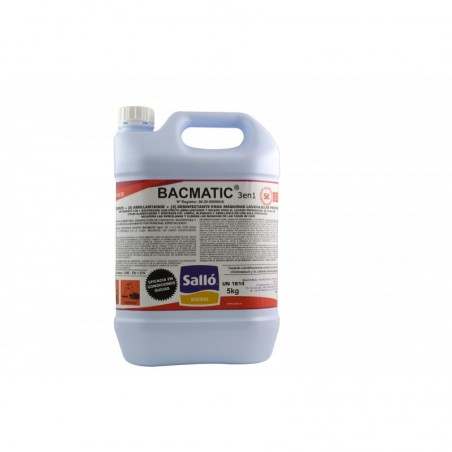As we look around the world today, we find many hog producers who are losing money or are at or near breakeven. This has happened due to this year’s steep decline in the massive input buying program of China for pork. Worldwide demand has softened, ports are clogged with backlogs of ships and feed ingredient prices, while drifting down a bit are still well above the 10-year average. China is facing the largest losses per head with the EU next and the USA approaching breakeven or at loss for higher cost producers.
Since producers are entering a more urgent cost cutting time it is profitable to think about how companies and individuals frequently create greater losses through “cost-cutting”. This very idea surprises many people because they forget that every single expense on the farm (unless it is incurred from a pure wasted resource, in which case it should be cut without question), it is tied to a future revenue stream. The problem is one acknowledging and understanding the flows of costs and revenue over space and time. The area (space) in which costs are cut (sow farm, finisher, trucking, etc.) receives the cost reduction benefit but another area (different space) may receive a reduction in revenue. Further, that revenue reduction will almost always occur weeks or even months (time) after the costs are cut. Reducing costs in one area may also raise costs in another area even if revenue is unaffected.

This leads me to always recommend that anyone with authority to issue the final order on a cost cut should have the knowledge and the skill, working with their production team and veterinarian (and in some cases slaughterhouse) to understand the full “follow-on” consequences of the cost reduction farrow to finish. Unfortunately, the person charged with reducing cost in production is usually just given a target total reduction (like 7%) but they never see any information about revenue.
In our modern pork production systems, unfortunately, each phase (sow farm, nursery, finisher, wean-to-finisher) is often viewed as its own profit or cost center and even management loses the full farrow-to-finish, comprehensive understanding of how all of the parts are connected to the final profit or loss which occurs at the sale of the animals. For instance, if the nutritionist cuts the cost of the diets through ingredient substitution but the average daily gain or feed efficiency of the animals are reduced, the damage may exceed the savings even when the “formulas” suggest it might not. Palatability can be a big issue around which predictability can be less than accurate. Add to that any carcass qualities that may be affected which reduce the sales price of the animals, all things being equal, and you can easily reduce total profits for many months and even months after the feed mix is either changed back or amended again.
During the very disastrous losses in 1994 and 1998 in the United States, many large producers prohibited flying by mid- and upper-level managers if the driving distance was 500 miles/ 800 km or less. In addition, since this was the era before the “unlimited” plans for cell phone minutes, they required everyone to turn in their cell phones and use public phones to make all calls, even critical business calls. Think of the opportunity costs that could easily mount when key messages are not delivered, and managers are spending all day in the car out of touch with the company or their fellow employees vs. the expense difference of a 30-minute flight.
When costs are reduced on the sow farm, unless it is eliminating a complete waste, the revenue change from that cost reduction can be up to a year away from being realized if the farm is producing animals to heavy-weight slaughter vs selling weaned pigs. Frequently these changes produce additional mortality and additional culls and lights but if that change is only a 1-2 percent increase, it may be missed in the records or attributed to something in the current period. This is especially true of saving money through giving partial doses of either vaccinations or other important treatments.
Many producers still operate with a single animal model or conception of the farm. Since most systems only produce averages for metrics which are tracked for performance changes, a widening of the distribution around that mean value is often unseen/unmeasured but is a major source of revenue reduction. Yet in calculating the “economics” of the proposed cost reduction, a single pig model with the average metrics attributed to it is used to carry out and complete the calculations. No change in the mean indicates (erroneously), no change in the revenue.
Many producers defer maintenance during times of cost pressure. While in some cases there is no harm in doing this, depending of course on what it is and how long it is deferred, consider how global inflation resulting from the government policies around the pandemic have dramatically raised the cost of building materials, rock, fuel, energy of all kinds, hired transport by truck and by water etc. When the producer experiences double the cost of just one year ago to catch up on the deferred maintenance items, the real calculation of whether profits were increased or decreased takes place and it often causes some surprising outcomes.
The primary reduction which producers should undertake when costs are higher than returns is to reduce selling weights. This should be done slowly and with special attention to the disruption that it can cause in flows and in logistics. It should also be done within the context of a very thorough examination of the pricing matrix used by the slaughterhouse. Weights should be reduced toward the new profit optimizing average weight for the distributions (of weight) of animals being sold, not calculated using a single pig’s average weight model. Weights should be increased with the reduction of losses as feed prices fall for instance or more domestic and/or export demands materialize, rather than waiting for the new prices to stabilize at higher levels. Changing weights can be very disruptive as mentioned and have led many larger farms in the US to be very reluctant to change market weight, preferring to take losses that are temporary and result from over investing in the animals. Others can move the average weight within a 10-20 lbs (4.5 – 9 kg) with little consequence to logistics as long as everyone knows the plan and can adjust.






